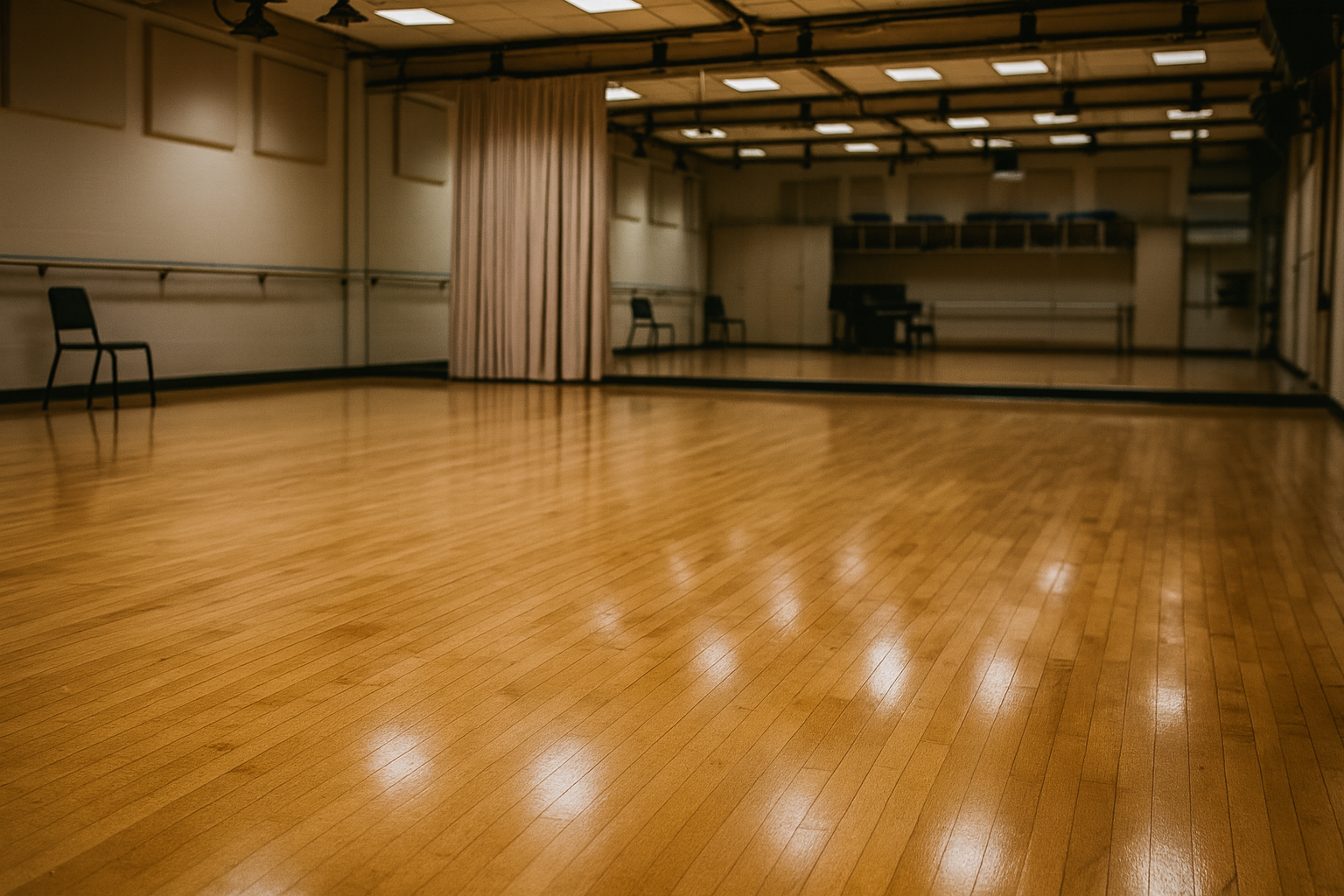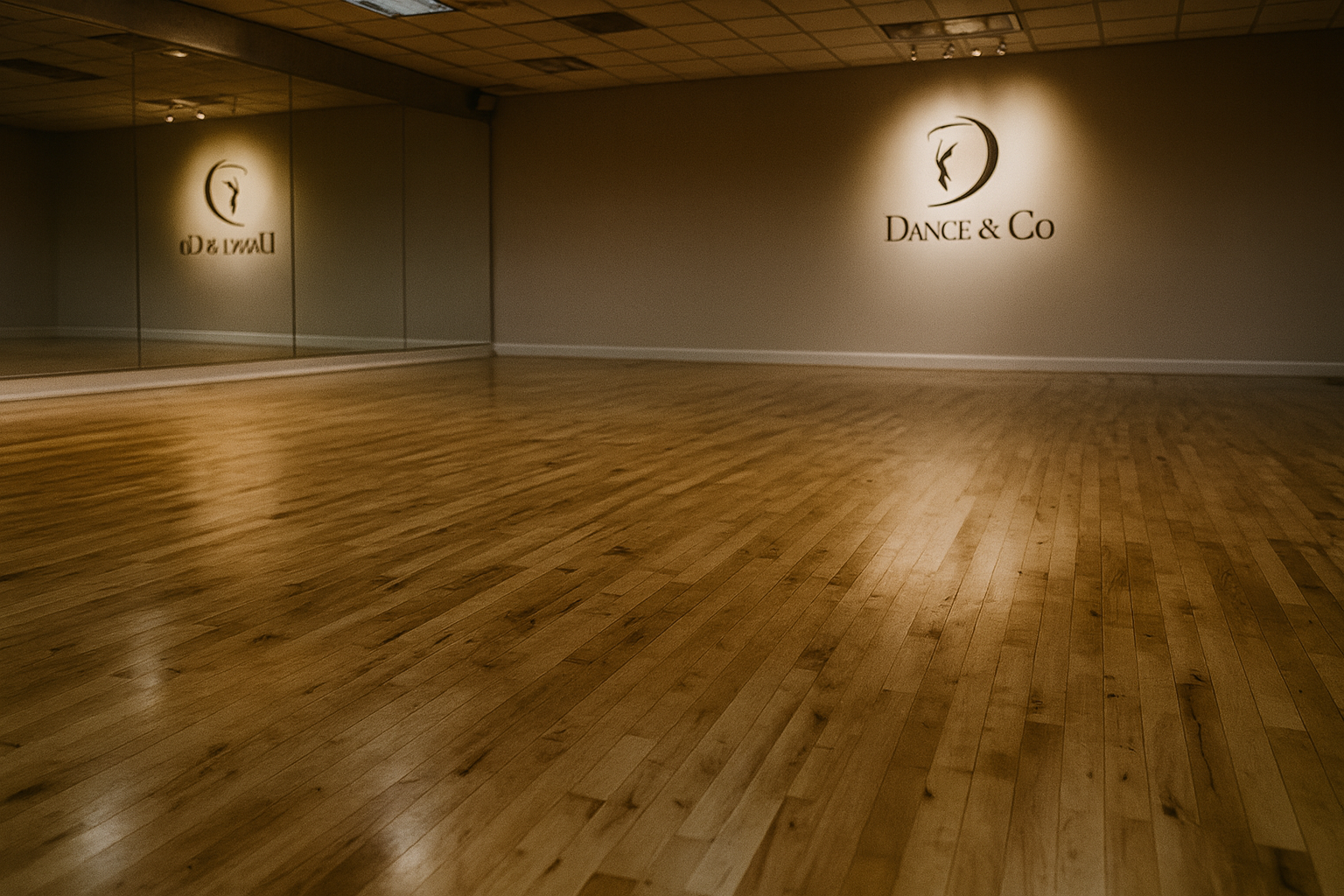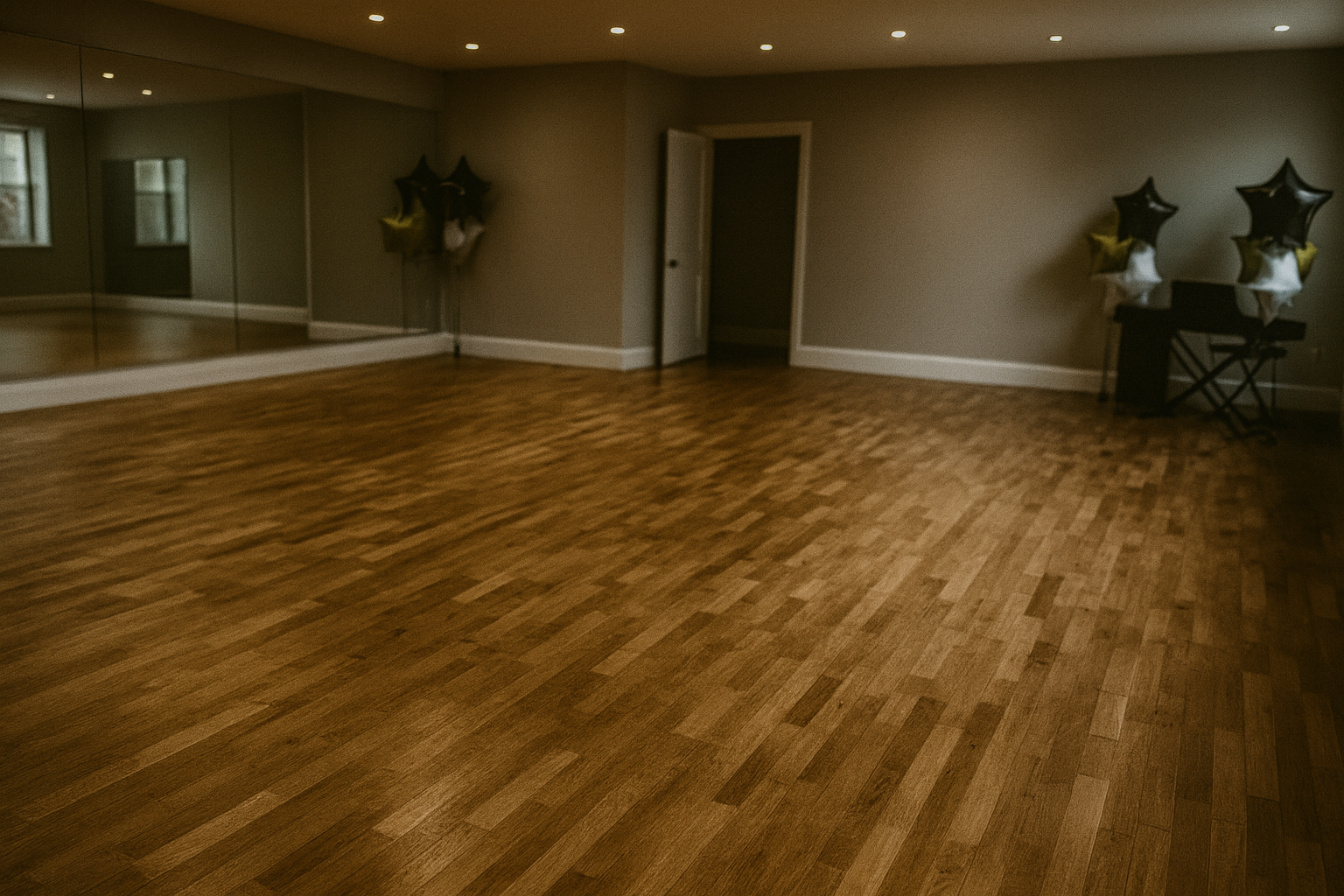When it comes to creating a dance studio, the flooring you choose is a make-or-break factor that affects every jump, spin, and shuffle.
The wrong floor can lead to fatigue, injury, or just a frustrating experience for dancers. The right one helps them move with confidence, protect their joints, and enjoy every moment in the studio.
We’ll break down the best flooring for a dance studio based on performance, safety, cost, and long-term durability.
Our Top 3 Picks
What Makes a Great Dance Studio Floor?
Before diving into flooring types, it’s worth understanding what makes a dance studio floor “great.”
Key Factors to Consider:
- Dance Style Compatibility: Ballet, tap, hip-hop, modern – each style has different needs for surface grip, bounce, and sound.
- Shock Absorption: Reduces injury risk from repeated impact.
- Slip Resistance: Prevents falls while allowing smooth movement.
- Durability: Withstands heavy use and high foot traffic.
- Maintenance: Should be easy to clean and keep safe.
- Installation & Cost: Includes upfront cost, subfloor needs, and labor.
- Aesthetic Appeal: The floor should complement the studio’s vibe.
1. Sprung Floors
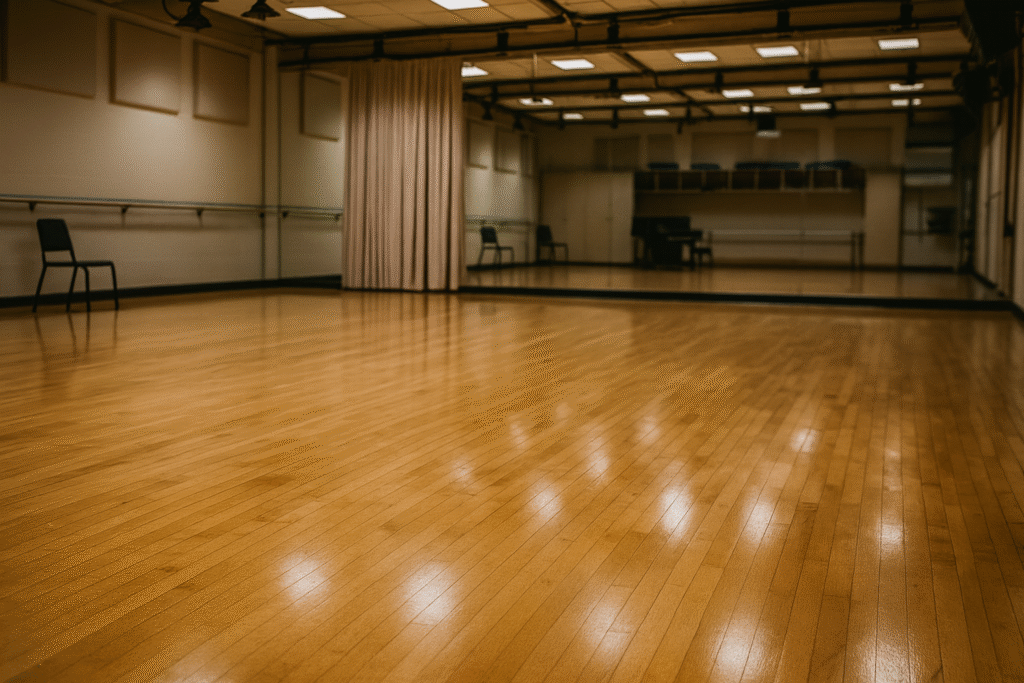
Sprung flooring is the go-to solution for professional dance environments. These floors are engineered specifically to absorb shock and return energy to the dancer, reducing stress on joints while enhancing performance.
Think of it as the Goldilocks of dance floors: not too hard, not too soft, just the right balance of flexibility and support.
Features:
- Multi-layer construction (foam/elastomer pads, load-bearing substructure, and top surface)
- Moisture-resistant membranes
- Modular or permanent installation options
- Surface options: wood, vinyl, laminate
- Designed to avoid the “trampoline effect”
Pros:
- Excellent shock absorption to prevent joint injuries
- Energy return reduces fatigue during long rehearsals
- Safe for nearly all dance styles (ballet, tap, hip-hop, modern)
- Durable and designed for long-term use
- Available in modular formats (easy to transport/install)
- Professional look and feel
Cons:
- Expensive upfront investment
- Requires proper installation for full performance benefits
- Might feel “too soft” until dancers get used to it
- Maintenance is important to retain its springiness
Bottom Line:
If you’re running a professional or multi-style dance studio, sprung floors are worth every penny. They’re a long-term investment in dancer safety and performance.
2. Vinyl Floors
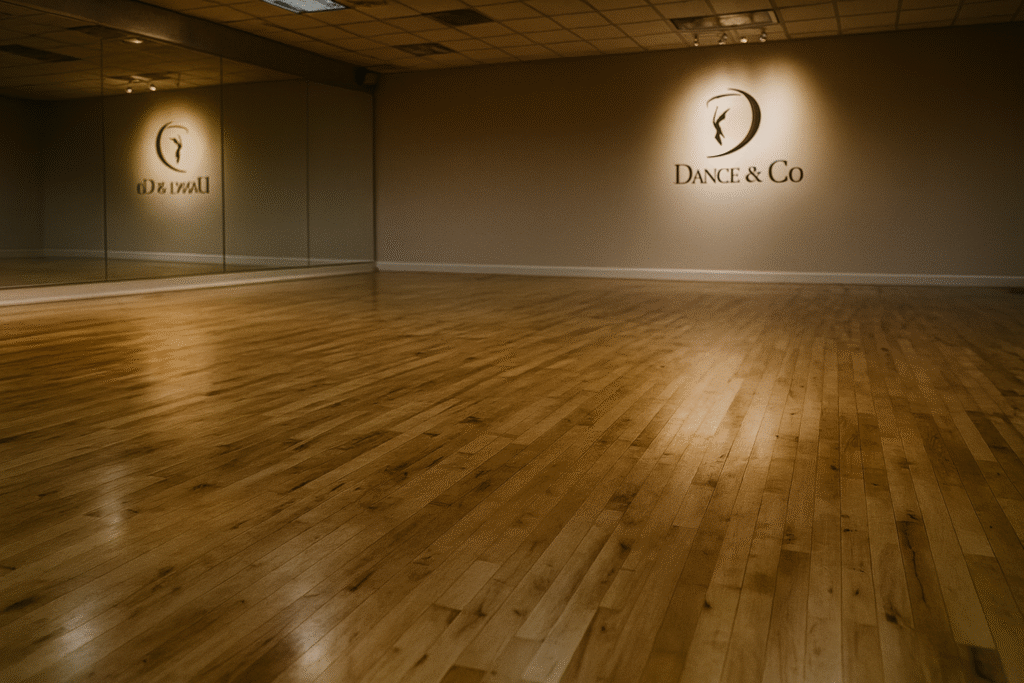
Vinyl is great, especially when used as a top layer over a sprung subfloor. It’s flexible, cost-effective, and designed to balance grip and glide.
Often referred to as Marley floors, these vinyl sheets are widely used in ballet, jazz, contemporary, and hip-hop studios for good reason. They’re also easy to roll out, which makes them ideal for portable or temporary studio spaces.
Features:
- Made of PVC with added durability agents
- Sold in rolls or planks
- Slip-resistant texture
- Can be layered over sprung or foam subfloor
- Portable or permanent options
- Various finishes (matte, wood-look, solid colors)
Pros:
- Very affordable starting cost (can be under $10/sq m)
- Lightweight and easy to install
- Excellent slip control
- Cushioned variants available for added shock absorption
- Suitable for a wide range of dance styles
- Low maintenance and easy to clean
- Can be used temporarily in multi-purpose spaces
Cons:
- On its own, it lacks sufficient shock absorption
- Doesn’t offer the same energy return as sprung wood floors
- Vinyl rolls can be bulky and heavy to store
- Surface texture may not suit all dance styles (e.g. pointe work may need more grip)
Bottom Line:
Vinyl is a smart, budget-conscious option for many studios, especially when combined with a good underlayer. It’s a favorite for a reason.
3. Engineered Hardwood Flooring
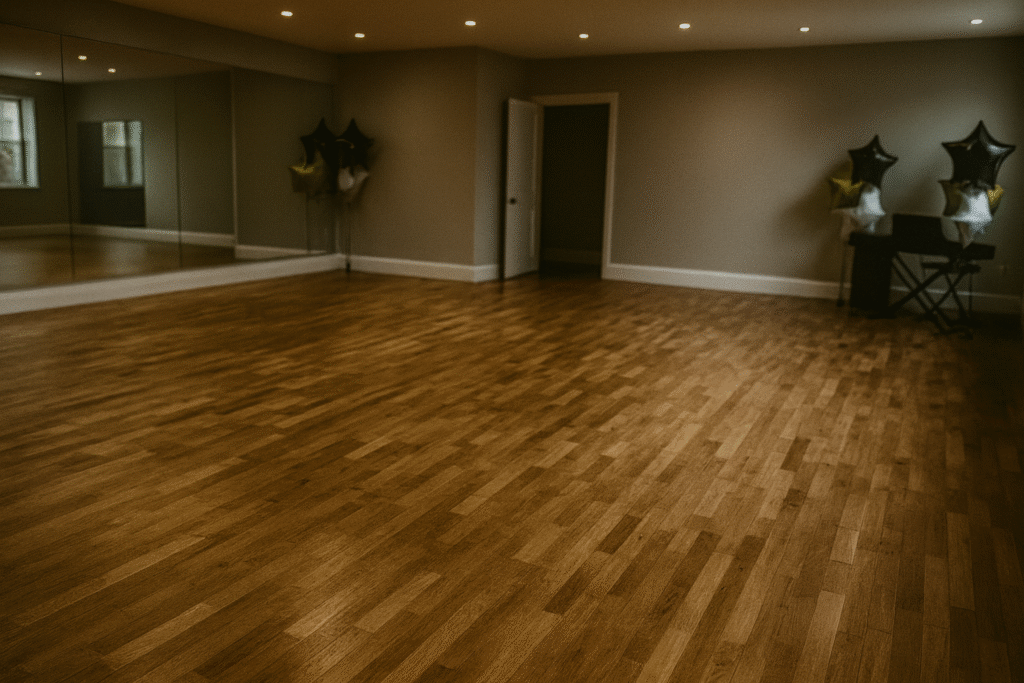
Want a studio that looks as good as it feels? Engineered hardwood flooring gives you the timeless look of real wood with better durability and stability than solid hardwood.
Unlike solid hardwood, engineered planks are made with multiple layers bonded together, which makes them less prone to warping. That matters in a studio where moisture, temperature shifts, and heavy use are all in play.
Features:
- Real hardwood veneer over multi-ply or fiberboard core
- Typically 3/8″ to 9/16″ thick
- Prefinished surface for durability
- Compatible with glue-down, nail-down, or floating installation
- Moisture resistant (within reason)
Pros:
- Gorgeous, high-end studio aesthetic
- Naturally absorbs shock better than solid hardwood
- Stable under varied conditions
- Compatible with many dance styles
- Less prone to warping or cupping
- Long-lasting with proper care
Cons:
- Higher cost than vinyl, but lower than sprung + wood combo
- Limited refinishing ability (due to thin veneer layer)
- Not portable or modular
- Less grip than vinyl – may require grip-enhancing finish for safety
Bottom Line:
Engineered hardwood is ideal for studios that prioritize both performance and presentation. It’s also a solid pick for styles like tap or ballroom that need a hard, resonant surface.
Comparison: Best Flooring for Dance Studio
| Flooring Type | Shock Absorption | Energy Return | Slip Resistance | Suitable for All Dance Styles | Portable / Modular Options | Budget-Friendly | Easy Installation | Low Maintenance | High-End Aesthetic | Long-Term Durability |
|---|---|---|---|---|---|---|---|---|---|---|
| Sprung Floors | ✔️ | ✔️ | ✔️ | ✔️ | ✔️ | ❌ | ❌ | ✔️ | ✔️ | ✔️ |
| Vinyl Flooring | ✔️ | ❌ | ✔️ | ✔️ | ✔️ | ✔️ | ✔️ | ✔️ | ❌ | ✔️ |
| Engineered Hardwood | ✔️ | ✔️ | ❌ | ❌ | ❌ | ❌ | ❌ | ✔️ | ✔️ | ✔️ |
How to Choose the Best Flooring for Your Dance Studio
So which floor wins? That depends entirely on your studio’s needs.
Here are a few things to weigh:
Primary Dance Styles
- Ballet/Contemporary: Prioritize shock absorption + controlled grip → Sprung + vinyl
- Tap/Irish/Flamenco: Hard surface for acoustics → Engineered wood
- Hip-Hop/Jazz: Shock absorption + slip control → Sprung or cushioned vinyl
Budget & Longevity
- Tight budget? Vinyl + foam underlay is your best bet
- Looking long-term? Sprung + vinyl will give you a safer, higher-end floor that lasts
Studio Setup
- Permanent space? Consider engineered hardwood or a fully installed sprung system
- Temporary or multi-use? Vinyl sheets over foam give you flexibility
Frequently Asked Questions
Can I use regular home laminate flooring in a dance studio?
Technically, yes, but it’s not ideal. Most home-grade laminate lacks proper shock absorption and slip control, making it unsafe and uncomfortable for dancers.
How often should dance studio flooring be replaced?
With proper maintenance, quality flooring (like sprung or engineered wood) can last 10–20 years. Vinyl may need replacing sooner depending on traffic and use.
Do I need a special subfloor for my dance studio?
If you’re not using a sprung system, yes. A shock-absorbing subfloor (like foam underlay) is key to preventing joint injuries and improving comfort.
Is there a universal floor that works for all dance styles?
Sprung floors with a vinyl surface come closest – they offer the shock absorption and slip resistance needed for most major styles, from ballet to hip-hop.
Conclusion
Finding the best flooring for dance studios comes down to one thing: how well it supports movement.
Sprung floors? Ideal if you want long rehearsal days without aching joints. Vinyl? A solid option when budget, grip, and low maintenance are the priority – especially with a good underlayer. Engineered hardwood? Great for tap, sound, and that clean studio aesthetic.
None of them are perfect for everyone, but there’s always a setup that fits how your space works.
If you want help figuring that out, book a free consultation. We’ll bring samples, measure your space, and walk you through the best options for your dance style, budget, and goals.


